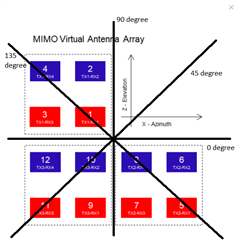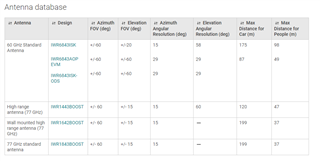Other Parts Discussed in Thread: IWR6843AOP, , AWR1843
I know the 60-64 vs 77-81 Ghz difference, but in practice which is the best for close range 3D objects/obstacles detection?
Is the output of the AWR1843AOP more dense than the IWR6843AOP?
I've tested the 6843 and its output is very sparse.



